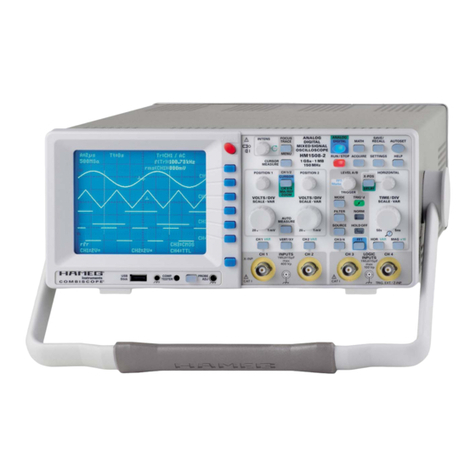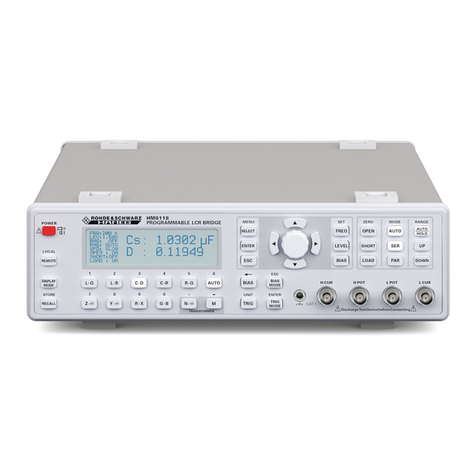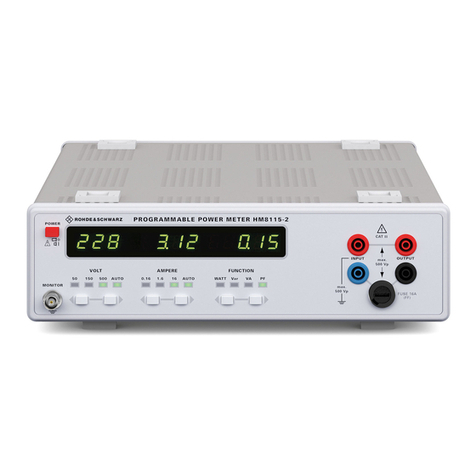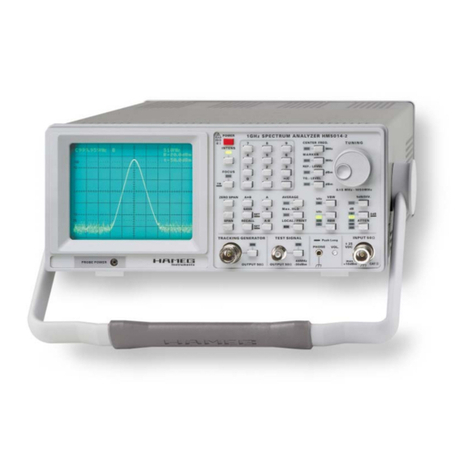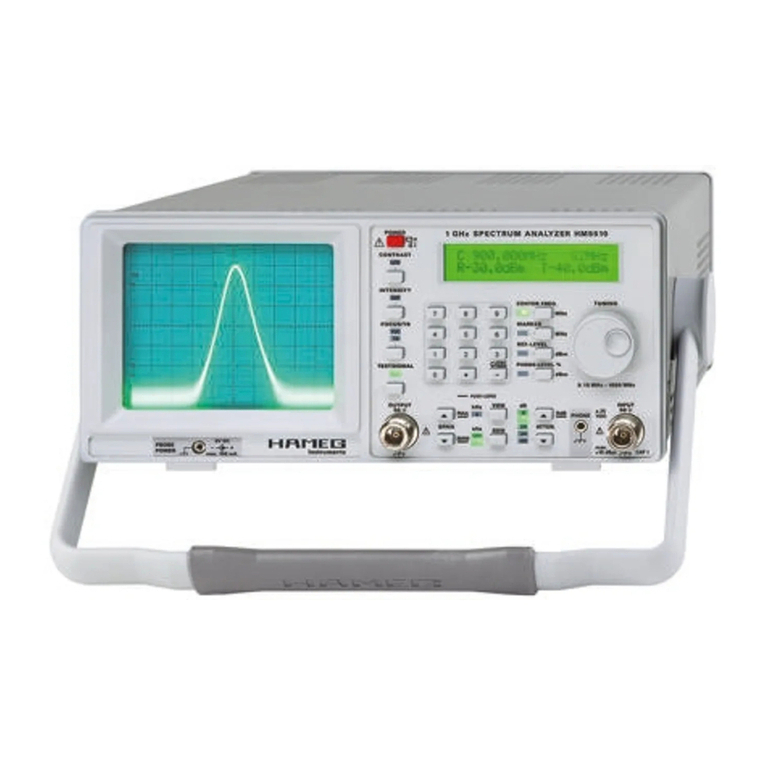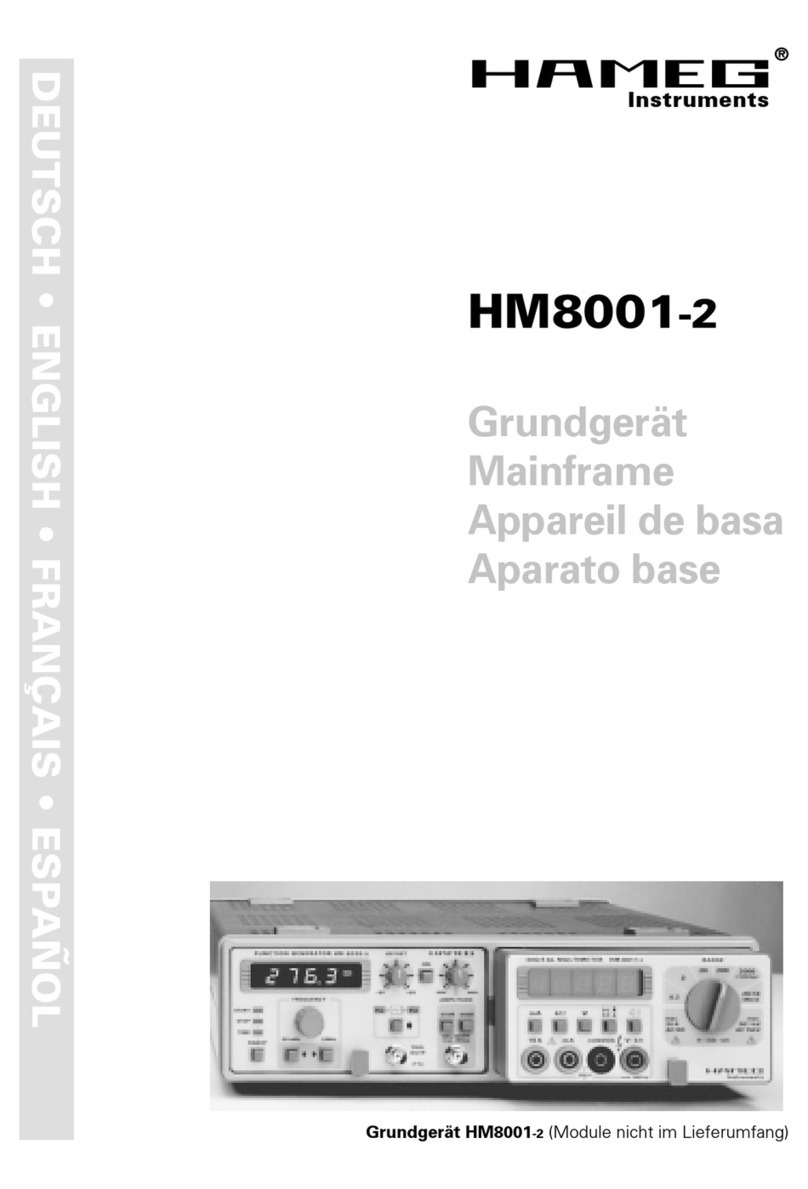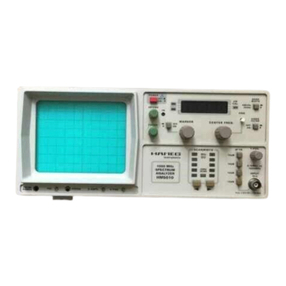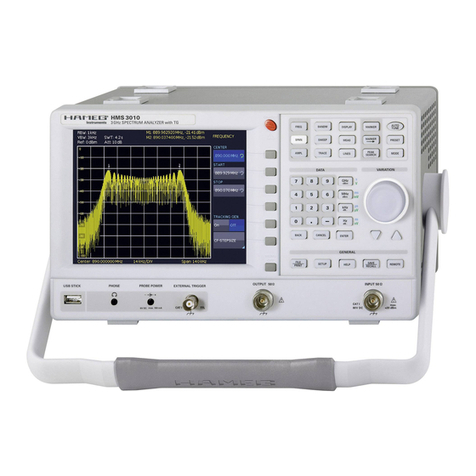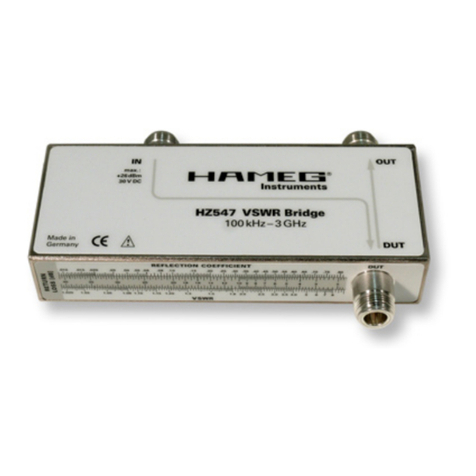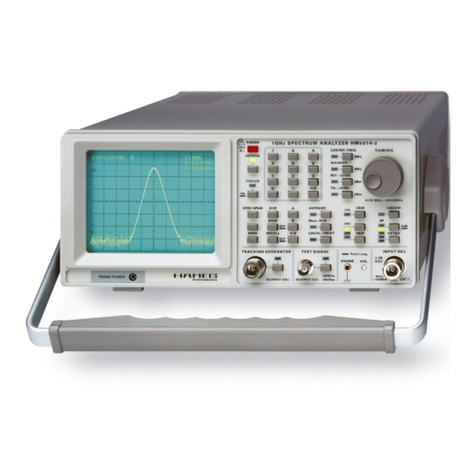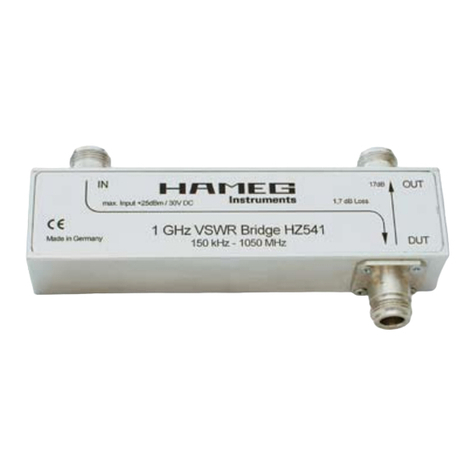
Änderungen vorbehalten 9
Die VSWR Messbrücke HZ 541 dient zur
Bestimmung des Stehwellenverhältnisses
(VSWR = Voltage Standing Wave Ratio) und
des Reflexionsfaktors (REFLECTION
COEFFICIENT) von Messobjekten, die eine
Impedanz von 50 Ohm haben. Typische
Messobjekte sind Dämpfungsglieder, Ab-
schlusswiderstände, Frequenzweichen, Ver-
stärker, Kabel oder Mischer mit einer Impe-
danz von ebenfalls 50 Ohm. Der Messbereich
ist von 150 kHz bis 1 GHz spezifiziert.
Die gemessene Reflexionsdämpfung (RE-
TURN LOSS) kann z.B. mit Hilfe eines HF-
Signalgenerators und eines Messemp-
fängers auf diskreten Frequenzen ermittelt
werden. Bei der Messung ganzer Frequenz-
bereiche, ist wegen des geringeren Zeit-
aufwands, der Einsatz von Spektrumanaly-
satoren mit eingebauten Trackinggene-
ratoren vorteilhaft.
Die Reflexionsdämpfung ist die Differenz
zwischen einer Messung mit totaler Fehlan-
passung („DUT“-Anschluss offen oder kurz-
geschlossen) und einer Messung mit dem
Messobjekt am „DUT“-Anschluss (DUT =
Device Under TEST).
Der Messwert bei totaler Fehlanpassung
wird wie folgt ermittelt:
1. Die Signalquelle (Tracking – Generator
oder Signalgenerator) wird mit dem „IN“-
Anschluss der Messbrücke verbunden.
2. Der „OUT“- Anschluss der Messbrücke
wird mit dem Eingang des Mess-
empfängers oder Spektrum-Analysators
verbunden.
3. Der „DUT“- Anschluss der Messbrücke
bleibt offen (Leerlauf) was eine totale
Reflexion bewirkt.
Die Höhe des reflektierten Signals wird über
den „OUT“-Anschluss vom Spektrum-Ana-
lysator gemessen und angezeigt. Der Mess-
wert muss registriert bzw. in den Referenz-
speicher abgelegt werden. Funktion: Spei-
chere A nach B (A->B) des Spektrum-Analy-
sators. Dann wird der Analysator auf den A
minus B (A – B) Betrieb umgeschaltet.
Anschließend wird das Prüfobjekt mit dem
„DUT“- Anschluss verbunden. Die Energie,
die zuvor komplett reflektiert wurde, wird
nun durch den Einfluss des Prüfobjekts nicht
mehr im vollen Umfang reflektiert. Es ge-
langt weniger Energie über den „OUT“-
Anschluss an den Spektrum-Analysator. Der
unter diesen Bedingungen angezeigte Diffe-
renzwert in dB ist ein Maß für die Güte des
Prüflings in Bezug auf dessen Anpassung an
den Wellenwiderstand des Systems. Man
bezeichnet diesen Wert als Reflexions-
dämpfung (RETURN LOSS).
Ein idealer 50 Ohm Abschlusswiderstand
reflektiert keinerlei Energie.
Die Reflexionsdämpfung geht dabei gegen
unendlich. In der Praxis lassen sich allerdings
40 dB nur sehr schwer erreichen. Dieser
Wert bedeutet, dass 99% der Energie im
Prüfobjekt „verbraucht“ und nur 1% reflek-
tiert werden.
Aus der in Dezibel gemessenen Reflexions-
dämpfung, lassen sich mit Hilfe der Tabelle
1 der Reflexionsfaktor (REFLECTION
COEFFICIENT)unddas Stehwellenverhältnis
(VSWR) ermitteln. Die Tabelle befindet sich,
zurschnellerenBestimmungderWerte,auch
auf der Messbrücke.
Bestimmung des
Stehwellenverhältnisses und des Reflexionsfaktors
